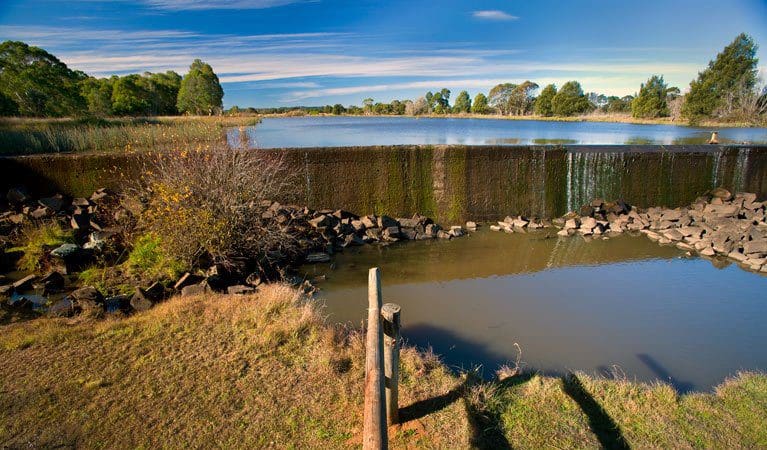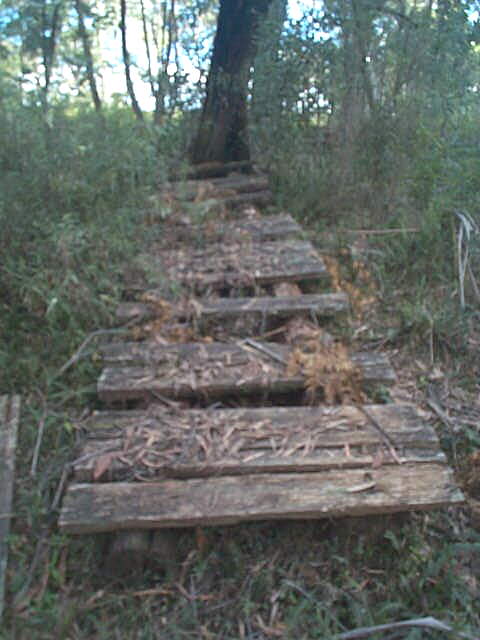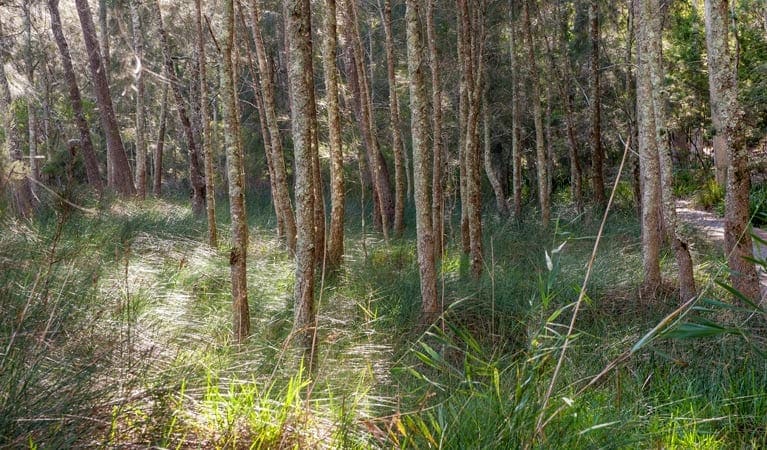Hike at a Glance
Max elevation: 563m
Min elevation: 541m
Total Ascent: 55m
Hike overview
The Orange Track is a perfect choice for families or those seeking a leisurely stroll in Bungonia National Park. This easy (grade 2) 2.2-kilometer return track takes roughly one hour to complete. The well-formed trail is easy to follow, consisting of a combination of dedicated walking track, short sections of management road, and the occasional small bridge. As the shortest and easiest track in the park, the Orange Track features minimal elevation changes, making it ideal for all ages and fitness levels. Enjoy a gentle walk through the natural beauty of Bungonia National Park.
Tips
- Bungonia National Park is a rugged natural area containing cliffs and steep gorges.
- Visitors should exercise caution when exploring the site and children should be supervised at all times.
- On entering the park, register your intention at the park office visitor register
- A park use fee applies to all vehicles entering the park (including motorbikes) unless you hold a NSW National Parks Annual Pass.
- Make sure you have a day-use ticket clearly displayed in your vehicle
- The weather in this area can be extreme and unpredictable, so please ensure you're well-prepared for your visit.
- Remember to take your binoculars if you want to birdwatching
Gallery
Got some great shots from this hike? Upload your photos here to inspire others and show off the beauty of the trail!
Click to view form >>
Submitting your photos doesn’t mean you lose ownership. You can be credited for your contributions, and you can request removal at any time.
Content use
Please don’t copy GPX files or content from this site to AllTrails or other platforms. Each trail has been personally mapped, documented, and refined to support Australia’s bushwalking and hiking community. While some details come from land managers, every listing reflects significant personal effort. This is a free, community-driven initiative—your respect helps keep it that way.
Walk map and GPX file
Max elevation: 563 m
Min elevation: 541 m
Total climbing: 55 m
Total descent: -55 m
Getting there
Getting to the trailhead: Bungonia National Park.
Bungonia National Park is 190km southwest of Sydney, 140km northeast of Canberra and 35km east of Goulburn. Access is via the village of Bungonia (25km east of Goulburn or 15km south of Marulan). At Bungonia follow the signposts to Bungonia National Park, a further 10km along Lookdown Road.
Located within Bungonia National Park, follow Lookdown Road from the township of Bungonia. While Goulburn serves as the closest major town, you’ll likely pass through the small village of Bungonia on your way to the park. Once you enter the park, continue along Lookdown Road past the park office. Your destination will be clearly marked – the Orange Track begins at Gabriel de Kerilleau carpark, offering ample parking for your visit.
Closest towns to this walk: Bungonia, Goulburn, Marulan, Tallong, Tarago, Wingello
About the region
Bungonia National Park, located an easy drive from Canberra, caters to all adventure levels. Nicknamed the "adventure capital of the Southern Tablelands," this park transforms from a seemingly dry plateau into a wonderland of dramatic landscapes and hidden surprises. Whether you seek a leisurely stroll or a challenging climb, Bungonia has something for you.
Start your exploration at the park office to discover the perfect trail. The Molly O'Neil track offers a short walk to The Lookdown lookout, while Adams Lookout provides stunning views of the Bungonia Slot Canyon. Imagine enjoying a picnic lunch after your hike through this impressive natural wonder!
For the truly adventurous, Bungonia boasts over 200 wild caves. However, tackling these requires experience and proper equipment. Beyond caving, the park offers rock climbing, canyoning, and abseiling for thrill-seekers. Designated picnic areas are perfect for relaxation, making Bungonia National Park a great destination for all.
Similar walks nearby
Looking for more walks in or near Bungonia National Park? Try these trails with a similar difficulty grade.
Track grade
Grade 2 (Easy) - A Gentle Introduction to Inclines: Grade 2 on the AWTGS represents easy walking tracks that offer a slightly more challenging experience compared to Grade 1. Similar to Grade 1, no prior bushwalking experience is required. The track surface is typically hardened or compacted and may have gentle hill sections or occasional steps. The total distance of a Grade 2 walk is typically no greater than 10 kilometers. These walks are still suitable for families with a bit more experience or those seeking a gentle introduction to some inclines.
Explore safe
Plan ahead and hike safely! Carry enough water, pack layers for changing conditions, and bring safety gear like a torch, PLB, and reliable communication device. Check official sources for trail updates, closures, and access requirements, and review local weather and bushfire advice. Most importantly, share your plans with someone before you go. Being prepared makes for a safer and more enjoyable hike! Stay Safe, Explore More, and Always #ExploreSafe.
Packing checklists
What you carry in your pack depends on factors like weather, terrain, and your adventure type. Not sure what to bring? My free planning, food, and packing checklists are a great starting point, covering day hikes, overnight trips, and multi-day adventures. Use them to customise your kit and always prioritise safety.
Let someone know
Before heading out, take a moment to fill out your trip intentions form. It’s a quick way to share your hike details with family or friends. If something goes wrong, they can notify emergency services, ensuring a faster response and peace of mind. Stay safe and enjoy your adventure
Suggest an edit
Spotted a change on this trail? Maybe there are new features, the route has shifted, or the trail is permanently closed. Whatever the update, I’d love your input. Your feedback helps fellow hikers stay informed and ensures that our trail info stays fresh and reliable.
Acknowledgement of Country
Trail Hiking Australia acknowledges the Traditional Owners of the lands on which we hike and pay respects to their Elders, past and present, and we acknowledge the First Nations people of other communities who may be here today.






